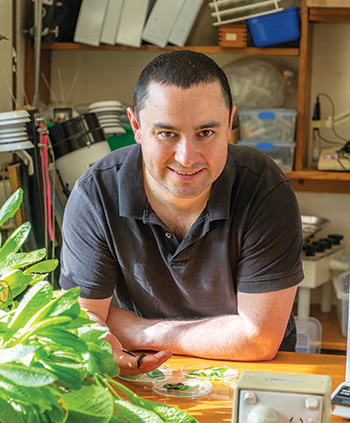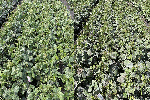 Dr Tom Heddle weighs hundreds of slugs each week, carefully monitoring their growth. This data will be added to a model being developed as part of a new management tool.
Dr Tom Heddle weighs hundreds of slugs each week, carefully monitoring their growth. This data will be added to a model being developed as part of a new management tool.
Analysing the life history of the grey field slug and black keeled slug is part of new research to help growers better respond to threats from these pest species
Every week, Dr Tom Heddle weighs hundreds of slugs in the laboratory at the University of Adelaide’s Waite campus, carefully monitoring their growth from egg to voraciously hungry adult.
The colonies of grey field slugs and black keeled slugs he is raising will provide valuable data on their growth and reproduction rates in different environmental conditions as part of a new GRDC-invested research project to optimise slug management, led by Dr Kate Muirhead at the South Australian Research and Development Institute (SARDI).
Dr Heddle’s data will be added to a model being developed as part of a new management tool to help growers plan their slug management and baiting strategies.
“There are some gaps in our knowledge about the physiology and ecology of slugs, and the black keeled slug in particular,” he says. “This is the species that has been causing the most damage in recent years.
In wet seasons, some growers in the south-east of SA talk about ‘the black wave of death’ as slugs munch their way across paddocks, causing significant damage.
Slug problems have been on the rise as farming practices such as reduced tillage, stubble retention and irrigation have provided favourable conditions.
Infestations cause crop damage and yield loss. Slugs can feed on the plant canopy, flowers and developing seed heads; however, the most significant damage and economic losses occur when slugs feed on emerging seedlings. Canola is particularly susceptible.
As a postdoctoral researcher, Dr Heddle’s studies will create comprehensive life histories for the grey field slug and black keeled slug, building long-term expertise to support the grains sector.
He is analysing how environmental conditions such as temperature and rainfall influence breeding patterns. Among his key questions are how often and how many eggs each species lays, how long it takes eggs to hatch and how quickly slugs grow in
different conditions.
Combined into new modelling, his findings will help growers to assess the threat slugs pose in any season, whether action needs to be taken and what strategies will be most effective.
Monitoring and baiting trials
As part of this project, slug populations are being monitored for three years at 34 sites across Australia in the mid to high-rainfall regions that experience slug threats.
There are 11 sites in SA, three in WA, 13 in Victoria and seven in NSW. Slug population and climate data collected at each site will be used to develop a model and decision-support tool to help growers predict the level of seasonal and paddock risk from slug damage.
Dr Muirhead says comparing slug populations across seasons and years can provide insight into the triggers for slug activity and inform the level of management effort required each season.
“It will help assess the longer-term effectiveness of slug management strategies applied on the farm. Knowledge of seasonal activity patterns will improve the accuracy of forecasting for risk of damage in regions where slugs are a sporadic threat.”
A two-year spring baiting trial is underway in NSW, Victoria and SA in conjunction with grower group partners Riverine Plains and Birchip Cropping Group.
These trials will test whether additional baiting regimes can help keep numbers under control and what the optimum timing for baiting might be.
Commercially available baits have been laid at three trial sites to compare plots with no baits, a single spring baiting application, and two spring baiting applications applied four weeks after the first.
All sites will be monitored in spring and autumn over two years for slug numbers and crop damage.
More information: Dr Kate Muirhead, kate.muirhead@sa.gov.au
Useful resources: GroundCoverTM story – Long-term monitoring ‘vital’ for slug management

























































